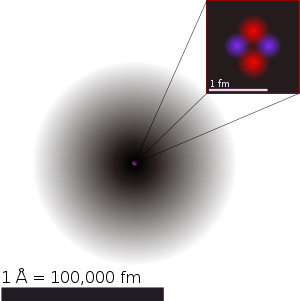 |
| The Periodic Table |
Even the name is familiar, you say "periodic table" to some one and chances are, providing they have had some education, they are likely to picture something that looks a little like the image to the left.
I have always loved the periodic table, when I was a kid and I first saw one in a class room I was instantly struck by just how beautiful it was. In those days there were 103 elements, the last being Lawrencium named after Ernest Lawrence the Nobel prize winning physicist who had quiet a lot to do with radioactivity. These days there are more than 112, the last being Copernicium.
Livermorium at 116 has been added as of May 2012, so far 35 atoms of Livermorium have been produced in the 12 years since it was first discovered!
The periodic table as it is now was first dreamt up by Dmitri Ivanovich Mendeleev and presented by him in 1871, it looks a little different to the modern day, but that is partly because there were only 56 known elements at the time.
What fascinated me about the periodic table was that it listed each and every element that makes up the known universe. All in one little table. Each element having one more proton than its predecessor. The elements are stacked into rows consisting of 2 elements, H and He, then 8, that's Li through to Ne, then 8, then 18, then another 18, then 32 and finally the remaining 25 to make a total of 112. If we get as far as element 118 then chances are we will have to start a new row.
Carbon, which gives us diamonds the hardest known material, sits right next to nitrogen which is a gas! Yet the differ by only a single proton. Potassium, the highly reactive metal that burns with a purple flame has only one more proton than Argon, a gas. Some of the elements become superconducting when cooled, others do not. Some are great at carrying electricity, others are semi conducting or have insulator properties.
The chemistry of the elements seems to be governed by the number of electrons each atom has around it, this is governed by the number of protons, the number of electrons being equal to the number of protons in electrically neutral atoms. While this makes sense in a way, it is still quiet staggering when you consider the differences between the different elements.
Some elements have radioactive isotopes which means that can undergo some form of particle emission from the nucleus and turn into another element. Some of the large atoms, Uranium for example can decay into two elements!
What I also find completely mind blowing is that apart from Hydrogen and Helium, which we currently believe have been here since the beginning of the universe, and excluding those that have been made in the lab, the rest were actually made inside stars.
Every atom that makes up our bodies is listed in the periodic table. We are mainly made from Hydrogen that has been here since the beginning of time. There may be atoms in your body that are 13 Billion years old and were there to witness the birth of the universe (that is if the Big Bang theory is correct!).
How cool is that, to think that we contains atoms of Hydrogen from the very beginning of the universe. Know wonder there are some days I feel old, it's because my constituent parts are really, really, really old.




